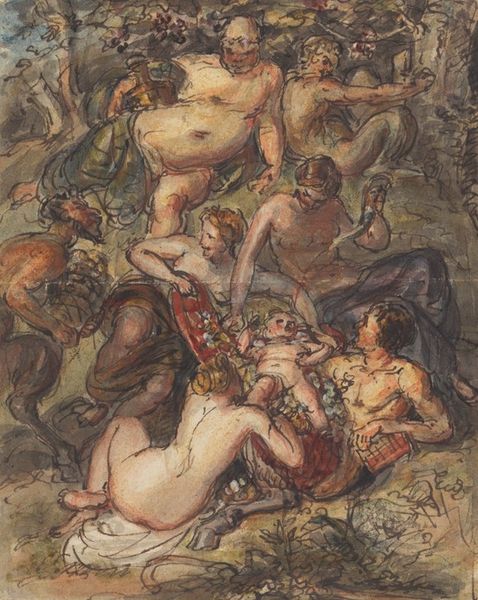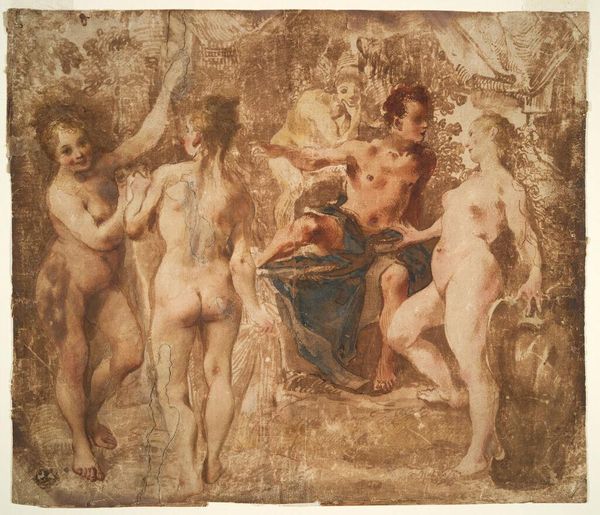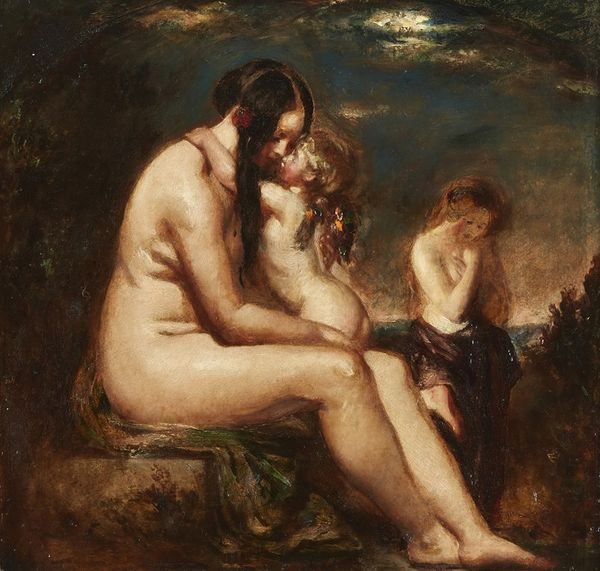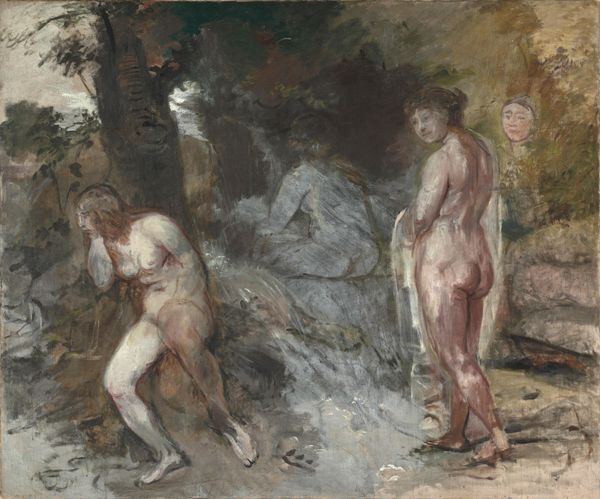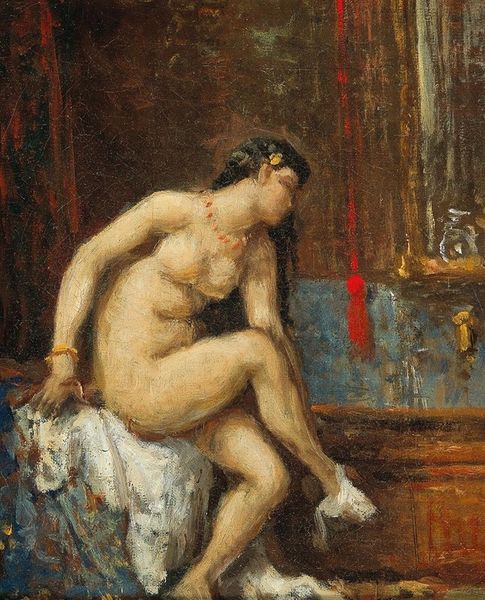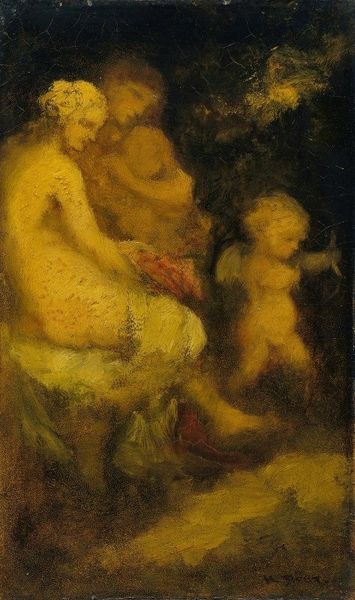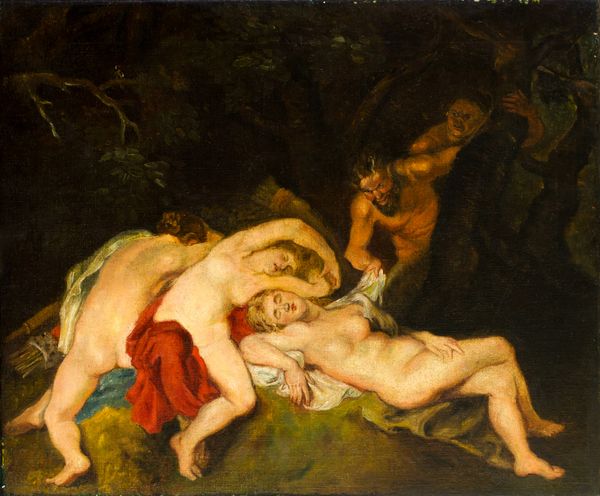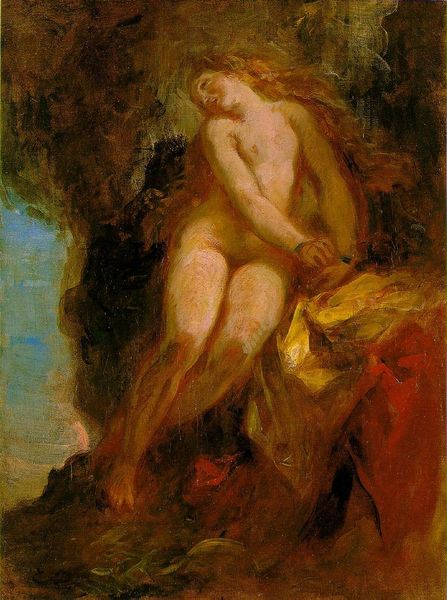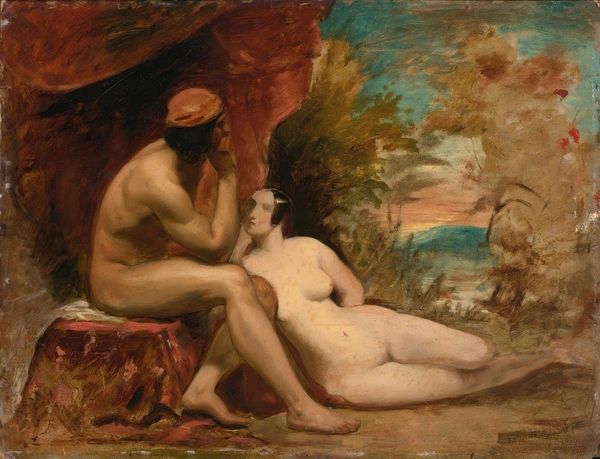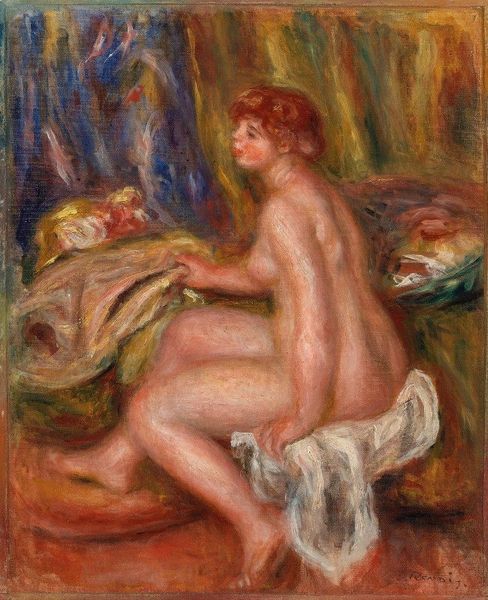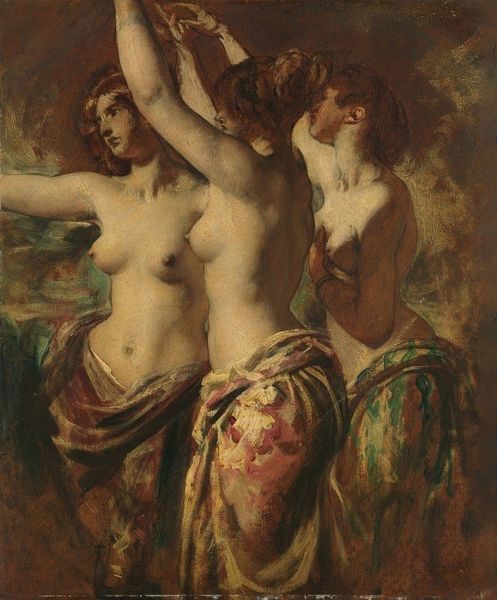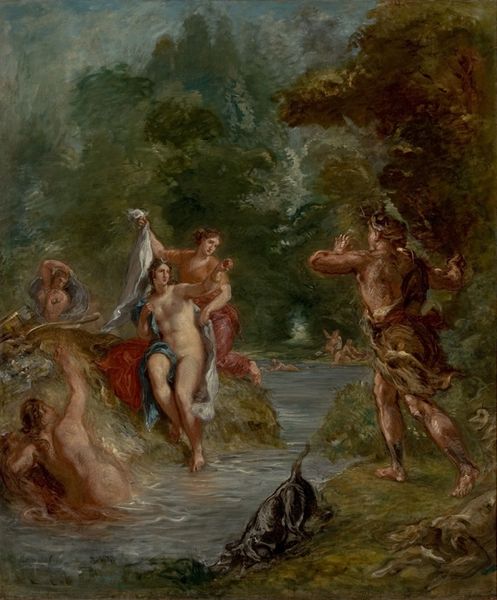
Copyright: Public Domain: Artvee
Curator: Here we have Eugène Delacroix’s, Suzanne et les vieillards, completed sometime between 1854 and 1855 using oil paint. Editor: It strikes me immediately as claustrophobic, almost voyeuristic, despite its evident beauty. The contrast between light and shadow creates a deeply uneasy feeling, doesn't it? Curator: The Old Testament story of Susanna provides a rich source for artists to explore themes of virtue, accusation, and judgment. Delacroix depicts the moment Susanna is surprised by the elders. He places it within a dense, almost theatrical space, heightening the emotional intensity. Editor: Yes, and her body is positioned as the focal point of male gaze, underscoring the power dynamics. How does Delacroix's treatment of this biblical tale speak to societal power structures, especially concerning women’s bodies and autonomy? It seems exploitative, almost. Curator: It's essential to remember that Delacroix, working within the Romantic tradition, uses this scene to explore psychological drama. The loose brushwork and the use of colour, particularly the contrast between Susanna's luminous skin and the darkened figures of the elders, heighten the tension and the implied threat. Editor: But aren't those stylistic choices also aestheticizing a very uncomfortable scenario? I wonder how a contemporary viewer might respond to the male gaze so prominent here, when discussions around sexual harassment and consent are central in current conversations. Curator: Art always speaks to us from within specific historical contexts. The beauty in Delacroix’s rendering does not erase the problematic aspects of the narrative but highlights how the social dynamics of accusation and victimhood were perceived and represented during his time. His romantic portrayal might also act as commentary. Editor: It makes you think, doesn't it? The echoes of historical narratives like these still resonate loudly today in legal cases involving bodily autonomy. Thanks for this contextual framework! Curator: The history around imagery, like this one, reminds us of our continued role in the evolution and reception of cultural depictions across time. Thank you!
Comments
No comments
Be the first to comment and join the conversation on the ultimate creative platform.

